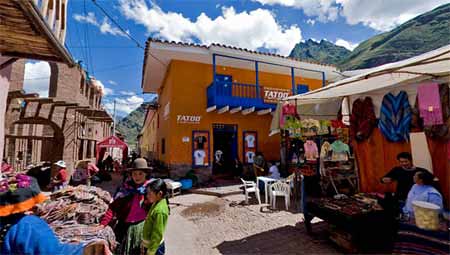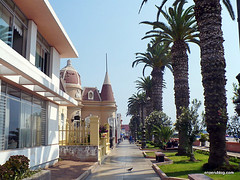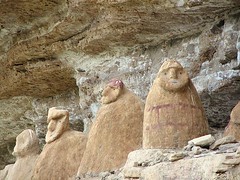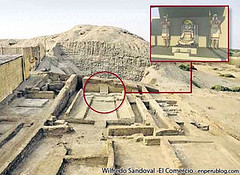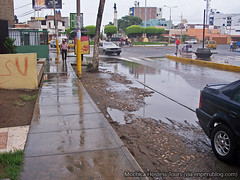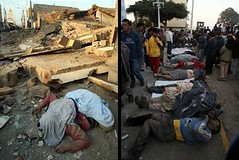Colonial Callao
Starting life as a rocky bay that was the nearest natural port to Pizarro’s capital of Los Reyes, El Callao soon became the most important port in the Spanish colonies. It has witnessed colonial splendour, pirate attacks, disastrous tsunamis, battles, republican splendour and economic collapse. Each of these events have left a mark on the city and the chalacos that live there, many of these marks visible to this day.
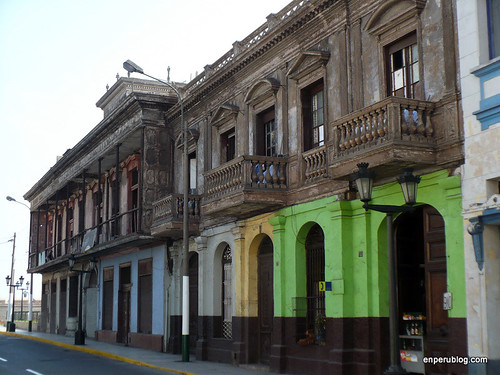
Forgotten
When in 1532 Pizarro founded the city of Los Reyes on the river Rimac, a city that went on to be called Lima, he did so knowing that just 12 kilometres away was a natural port. The area on the north side of what would later become known as the La Punta didn’t yet have a name. It was referred to as just “the port of Lima” by some, and by Spanish sailors as a “pebble” bay, which in Spanish sailor slang of the day was “callao”.
When ships arrived in the bay, those disembarking had to head straight to Lima – until 1537 when Spaniard Diego Ruiz set up a small resting spot consisting of a building or two. In 1555 Callao started to come to life. More Spaniards came to set up homes, and businesses were opened there. By the following year Callao was officially declared a satellite town of Lima by the viceroy, even having its own mayor.
Permanent settlement and increasing wealth from trade – wealth that was no longer isolated to walled and protected Lima – made Callao a prominent target for pirates. A violent attack by Englishman Francis Drake in 1579, and another by Dutchman in 1624 lead the chalacos, as those living in the city came to be called, to build a defensive wall like that of Lima.

Splendor
The defensive wall was completely wiped out in 1746 after an earthquake caused a huge tsunami. The city of Callao suffered greatly. Of a population of 5000, only 200 survived. The city’s buildings were washed away. The viceroy at the time founded Bellavista nearby, slightly further back away from the sea, but the two hundred survivors weren’t interested in moving away from their home city, and began reconstructing.
With the city walls destroyed, and now without protection for their prominent port, the Spanish started construction of the Felipe Real fortress in 1746, finishing it in 1773.
Protected by the fortress, and as flooded with wealth as ever, a new Callao began to take shape. Callao emulated and competed with colonial Lima with its attractive colonial buildings with grand balconies. It is this Callao that can still be seen today in a neglected state, and this Callao that changed hands three times during Peru’s struggle for independence from Spain in the early 1800s.
Callao continued to be one of the continent’s, and the world’s, prominent trading ports in the Republican period of the mid to late 1800s, particularly during the Guano boom which again saw untold wealth flood into the region. Ever more exquisite mansions were built and Callao grew in importance. In the 1850s South America’s first railway was built, taking goods and people between Lima and Callao. This railway would later be extended into the Andes and become the highest elevated and most complex railway line ever built.
Callao was also home to Peru’s first fire brigade. La Unión Chalaca Nº 1 was staffed mainly by Italians and inaugurated in 1860 as an example to the rest of Peru. It was in Callao that foreign migrants arrived, and in Callao that many stayed.

Tradition
As Lima grew exponentially in the 20th century, Lima and Callao merged and blended together as a single urban area. It was during this time of mass immigration to Lima that the wealthy fled to newly created districts in the south. Into the vacuum of colonial Lima and colonial Callao moved immigrants without the financial ability to maintain the historic districts. The historic buildings slowly fell into decline.
Today Callao’s colonial buildings are in a state of disrepair, some bordering on collapse, just like those in colonial Lima, Barrios Altos and Rimac. Still, they retain an air of splendour and its not hard to imagine how the place would have looked 200 or so years ago.
Callao has passed from a place where ships landed, to a colonial port, to an imperial port and to a busy modern port. It has been transformed from a small settlement outside Lima, to a colonial city in its own right, and eventually to become an independent region of the country. Although once a place of wealth, and now a place of poverty, its past splendour, although slowly deteriorating, is still on show for all to see.
Photos
Tags: 1500s, 1600s, 1700s, 1800s, 1900s, architecture, bom, callao, colonial, earthquake, independence, pirates, port, spaniards, tsunami, wealth




